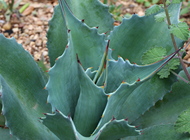 |
Morus alba |
 |
| Common name |
white mulberry |
| Family |
moraceae |
| Life cycle |
tree (Z4-9) |
| Flowers |
yellow-green (March-April) |
| Size |
to 30' |
| Light |
sun-part shade |
One of the most prevalent tree weeds in our garden (along with black walnuts and wild cherries), white mulberries pop up in all kinds of places, and are fast growers. On quite a few occasions, I didn't notice them until they were quite tall and robust-growing, and hard to extract with their roots. This is an introduced species, native to Asia. Since it has spread from being introduced as a host plant for silk production, it has become much more common than the native red mulberry (Morus rubra), which is more at home in shady woods than in suburban gardens. The leaf shape of white mulberry is variable, ranging from entire (no lobes), to irregularly lobed with mitten or hand shapes. Compared to the finely and sharply serrated leaves of red mulberry, white mulberry has larger, more rounded serrations.
|
This is a weed in our garden About my plant portraits
PlantLinks to other web pages about Morus alba
I welcome comments about my web pages; feel free to use the form below to
leave feedback about this particular page. For the benefit of other visitors
to these pages, I will list any relevant comments you leave, and if
appropriate, I will update my page to correct mis-information. Faced with an
ever-increasing onslaught of spam, I'm forced to discard any comments including
html markups. Please submit your comment as plain text. If you have a
comment about the website as a whole, please leave it in my
guestbook. If you
have a question that needs a personal response, please
e-mail me.
Last modified:
July 19, 2015
Contact me
|


